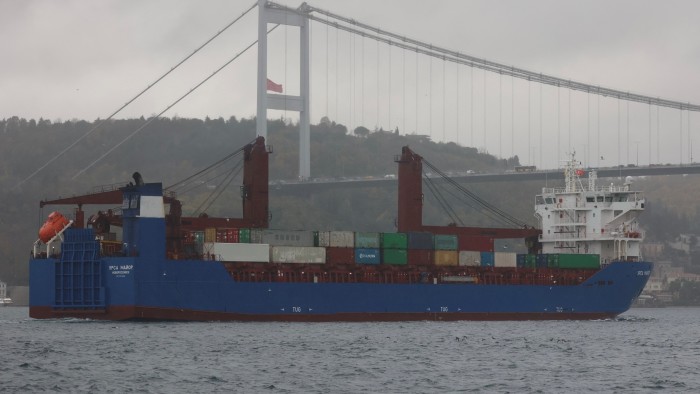Physical Address
304 North Cardinal St.
Dorchester Center, MA 02124
Physical Address
304 North Cardinal St.
Dorchester Center, MA 02124

Unlock Editor’s Digest for free
Roula Khalaf, editor of the FT, picks her favorite stories in this weekly newsletter.
A Russian cargo ship operated by the Defense Ministry’s logistics fleet sank in international waters between Spain and Algeria on Tuesday while en route from St. Petersburg to Vladivostok.
The ship Ursa Major sank after an explosion in its engine room. Two crew members remain missing, while another 14 have been rescued and taken to the Spanish port of Cartagena, Russia’s Foreign Ministry said.
At 142 meters long – roughly one-and-a-half football pitches – the Ursa Major was the largest ship operated by the Russian military’s logistics arm, Obronlogistika, and had a cargo capacity of up to 1,200 tonnes.
The General Intelligence Directorate (GRU) of the Ministry of Defense said The ship transported goods between Russia and Iran in the Caspian Sea before being reassigned to a route connected to Syria.
According to information on the Obronlogistics website, the ship was transporting cranes and equipment for icebreakers to Vladivostok as part of a “state mission” to develop the Northern Sea route.
Moscow has in recent years championed the North Sea route as a faster alternative to the Suez Canal for shipping to China, Russia’s largest trading partner, on which it has increasingly relied in the face of Western sanctions.
The route lies entirely within arctic waters but becomes more navigable during the summer months due to the warming climate.
A typical journey from the northern Russian port of Primorsk via the Suez Canal to China takes 45 days, while the Northern Sea Route cuts it to 35 days.